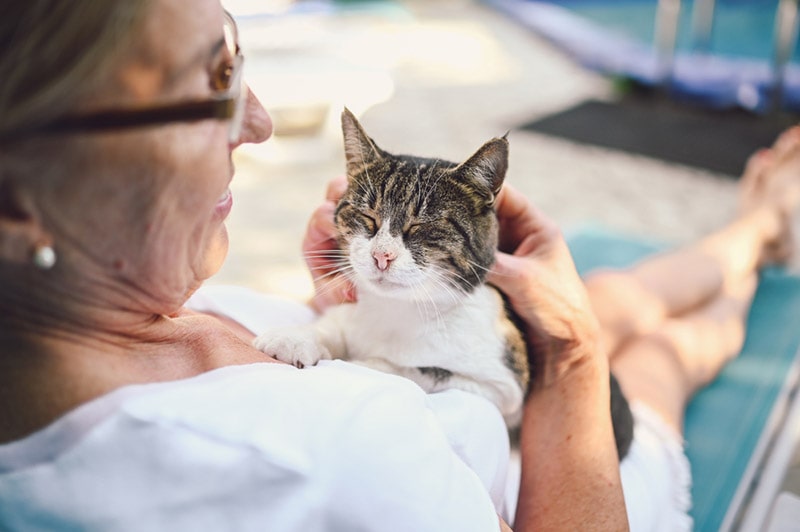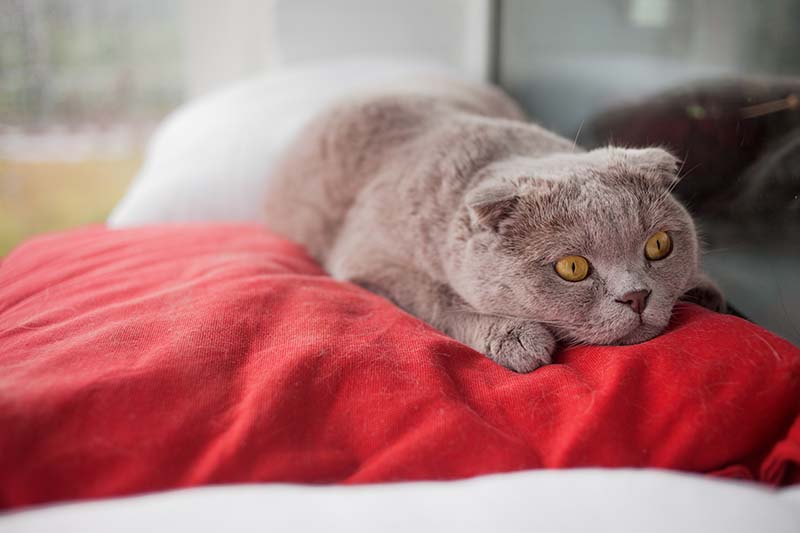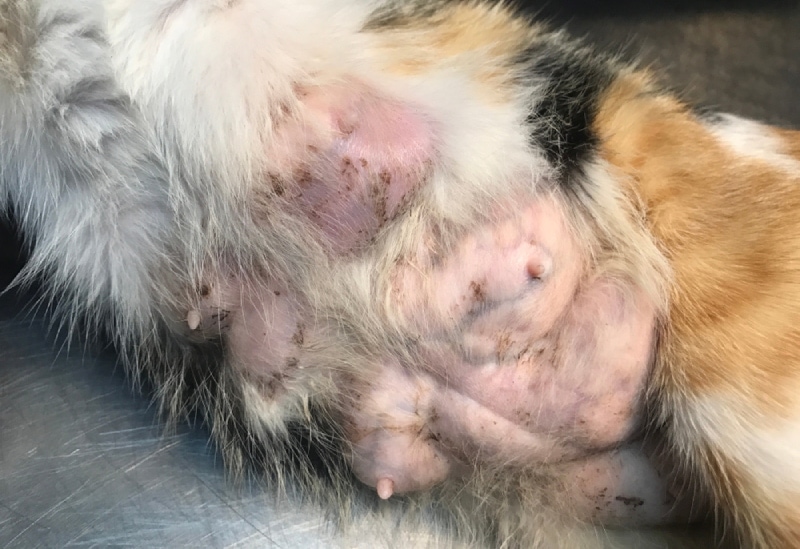Do Cats Go Grey as They Get Older? Our Vet Explains
By Dr. Kim Podlecki, DVM (Vet)
Updated on

Click to Skip Ahead
One of the unofficial ways of telling a person’s or a dog’s age is by the development of grey or white hair. In ourselves, this can occur at a range of ages, but seems to be associated commonly with people once they turn 40. In dogs, we are all familiar with the greying of the face and muzzle, in addition to changes in hair color over other parts of their body. But can cats also get grey hair as they age? Yes, cats can go grey as they get older, but it is not as common as in dogs and people. But why don’t we tend to see as many “grey-muzzled” cats as we do dogs? What are other signs of an aging cat aside from grey hair? We’ll answer all of these questions in this article.
What Causes a Cat’s Hair to Turn Grey?
Melanin is the pigment that gives hair and skin its color. The melanin that cats have is the same that humans have. As a cat ages, they will start to lose melanin and the resulting color is grey versus colored fur. The fur does not turn grey, but rather will grow in grey. Each hair follicle or pore will have one central hair, and multiple smaller hairs around it. In other words, cats have a compound hair follicle. As a cat ages, if a certain follicle is not producing melanin anymore, then those hairs will grow in grey versus colored.

What Affects Hair Growth and Color in Cats?
Hair growth, color, and color changes in cats are affected by numerous things. A cat’s nutrition is very important to the health of their fur and may also affect the color. Hormones, or if a cat is intact or not, can also affect the fur. If your cat has underlying disease such as viral diseases, diabetes, hyperthyroidism or even kidney disease, all of these things can affect the hair. Other things that can affect the hair are the amount of sunlight your cat is exposed to in addition to seasonal changes, which are more pronounced in outdoor cats.
Other Common Fur Changes
Grey hair is not commonly seen in cats. If it is, typically the cat is geriatric, or in the upper teens to early twenties in age. However, there are other fur changes we can see. Older cats can develop an oily coat with diseases such as hyperthyroidism and diabetes. Other times the coat may appear unkempt and oily because an older cat is not grooming themselves as much. This is the same with obese cats. Even with short haired cats, matting can be seen from decreased grooming.

How Old Will My Cat Be When Their Hair Turns Grey?
This is a huge unknown. There is no set age where your cat will lose melanin and/or produce less melanin. Each cat is different and it depends on many of the factors discussed above. In general, we do not tend to see “grey faced” cats as much as we see grey faced dogs. If your cat has developed grey or white hair, they are likely in their upper teens or even into their twenties in age.
What Are Other Age Changes Seen in Cats?
As veterinarians, we often get asked how old an animal is. This is especially true with stray dogs and cats that are found and adopted as adults. If your cat doesn’t have grey hair, what are other age changes you may see? The following are other things we look for in veterinary medicine that may indicate your cat is an older adult.
Mature Lenses of the Eye
As your cat ages, the lens of the eye will also age. This is called lenticular sclerosis. It becomes more dense and thicker with age, as the lens does not grow larger. The thicker the lens becomes, the more grey or slightly blue in color the lens will appear. This is different than cataracts and your cat will still be able to see, though their vision may be slightly blurred.

Muscle Mass Loss
As animals age, it is normal to lose some mild muscle mass. We see this commonly along the spine of a cat, and sometimes their back legs. This can become more pronounced with other underlying diseases. If the muscle loss is just from aging, it should be mild.
Arthritis
Arthritis in cats can be very difficult to notice. Often cats are fairly sedentary as young adults, so changes in behavior may be difficult to notice. Some things to look out for are your cat not climbing or jumping as often, not going up/down the stairs, having difficulty getting in/out of the litter box, or even going to the bathroom out of the litter box. Your veterinarian should be able to complete a thorough exam and find painful areas on your cat that may indicate arthritis. Radiographs are then used to confirm the presence of arthritis.
Development of Other Diseases
While we can see a number of juvenile-onset diseases in cats, in general, middle-aged to senior-aged cats are at higher risk for disease. Common things we can see in older cats are kidney disease, hyperthyroidism, and diabetes. These can be diagnosed with bloodwork by your regular veterinarian. An ultrasound is needed to determine what type of kidney disease your cat has, but a simple blood test will tell your veterinarian that the kidneys are affected.
Conclusion
While cats’ hair can turn grey as they age, we do not tend to see this as commonly as we do in dogs. The hair becoming grey is due to decreased melanin, resulting in the hair growing in grey versus a color. While you may not notice any grey hair, you may notice an oily appearance to your cat’s fur, or even some matting due to decreased grooming. As your cat ages, there may be other visible signs such as muscle mass loss, arthritis, maturing of the eye lens, and onset of other diseases. There is no set age where we will see changes in the fur or other changes occurring in an older cat.
Featured Image Credit: Alina Troeva, Shutterstock














